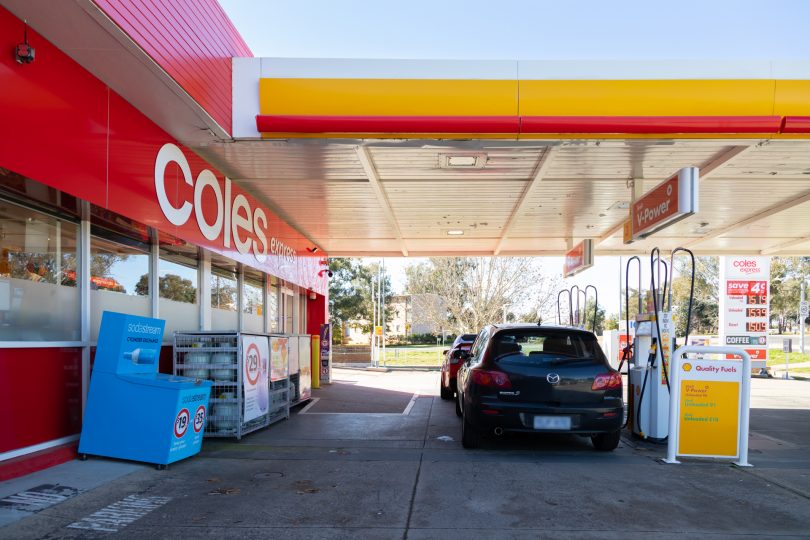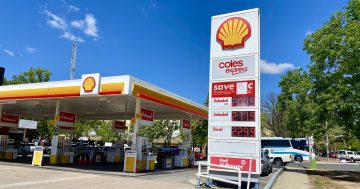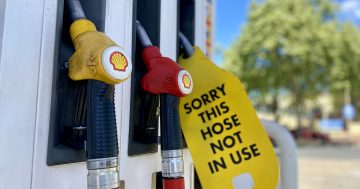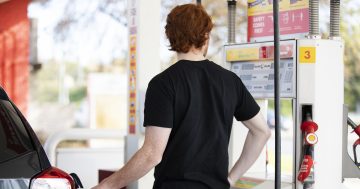
The good ol’ days when petrol was around $1.50 a litre. Photo: Michelle Kroll.
We all had our fingers and toes crossed that 2022 would be a peaceful and quiet year after more than two years of chaos. But two months in and there is already the threat of all-out conflict between Russia and Ukraine. For Canberrans, the effects can be felt every time you pull up at a petrol pump.
It’s never a good day when the low-fuel light comes on, but since the beginning of 2022, the dread has become even more real. Over the past eight weeks, the average price of unleaded petrol in Australia has risen by 17 per cent and 6.5 per cent in the ACT.
The average price of unleaded petrol in the ACT began the year at $1.68 per litre. As of Sunday (20 February), it had risen to $1.79.
After fuel prices collapsed in April 2020 when COVID-19 first swept across the country, they have risen 96 per cent, reaching a record level in the last quarter of 2021. This due to demand for oil increasing as countries pull out of the pandemic-induced economic slump.
The Australasian Convenience and Petroleum Marketers Association (ACAPMA) is the national peak body representing the interests of Australia’s fuel wholesale, distribution and retail industry. ACAPMA CEO Mark McKenzie says the most recent upward swing is almost entirely to do with the threat of conflict in Russia.
“Russia is the second biggest producer of oil in the world, producing 9.8 million barrels every day. As it now stands on the edge of a conflict with Ukraine, it will be distracted from exporting oil. The global oil market is now factoring in this potential conflict.”
Mr McKenzie says Australia is heavily influenced by the global market, and that the global market has been dealing with “unprecedented conditions”, starting with the first lockdown in 2020.
“Back then, the place was awash with fuel that nobody really wanted.”
In Australia, up to 85 per cent of the cost of fuel at the pump is due to overseas production costs. The remaining 15 per cent comprises costs and taxes associated with getting it on tap at local petrol stations.
Mr McKenzie says that since the first shock to the system, global wholesalers have been playing it safe with conservative estimates on global demand.
“You can’t just turn a refinery off like a light bulb. It can take six to eight weeks to spin a refinery up or down,” he says.
“But wholesalers have been consistently surprised by the rate at which countries have recovered from COVID-19.”
He also says that “demand for everything has increased”, leading to shortages across a range of goods and services.
Unlike other capital cities in Australia, Canberra isn’t affected by the fluctuating fuel prices seen in Sydney and Melbourne. As a result, our increase has been more gradual.
“You might go to Sydney and notice it’s 15 to 20 cents cheaper than Canberra,” Mr McKenzie says. “Other times, it will be more. This is due to a bidding war between local service stations, with a typical cycle lasting 28 days.”
In the week ending 13 February, Canberra recorded the third lowest average unleaded fuel price of the capital cities, after Adelaide and Sydney.
The Federal Government has tasked the Australian Competition and Consumer Commission (ACCC) with monitoring the national fuel industry. Each company is required to report its income and costs every quarter, so Mr McKenzie doubts price gouging is at play.
But the future may not be bright.
“Trying to predict the future in this situation is impossible,” he says. “But the pressure will continue to trend upwards in the near term if nothing changes.”
He said that if the conflict in Russia does abate, we can expect the price increase to gradually drop off over two to three weeks.















